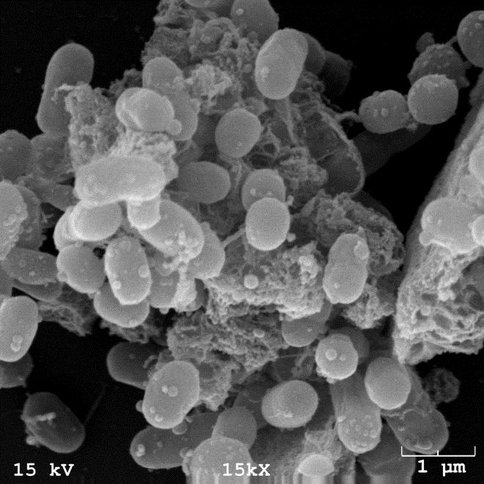2012 Annual Science Report
 Arizona State University
Reporting | SEP 2011 – AUG 2012
Arizona State University
Reporting | SEP 2011 – AUG 2012
Stoichiometry of Life - Task 4 - Biogeochemical Impacts on Planetary Atmospheres
Project Summary
Oxygenation of Earth’s early atmosphere must have involved an efficient mode of carbon burial. In the modern ocean, carbon export of primary production is dominated by fecal pellets and aggregates produced by the animal grazer community. But during most of Earth’s history the oceans were dominated by unicellular, bacteria-like organisms (prokaryotes) causing a substantially altered biogeochemistry. In this task we experiment with the marine cyanobacterium Synechococcus sp. as a model organism and test its aggregation and sinking speed as a function of nutrient (nitrogen, phosphorus, iron) limitation. We have found so far that these minute cyanobacteria form aggregates that can sink gravitationally in the water column, and we are currently experimenting with minerals that might have been present in the Proterozoic ocean to see if those can accelerate sinking.
Project Progress
We have grown the cyanobacterium Synechococcus sp. WH8102 as a model organism for the study of aggregation and subsequent settling by early marine cyanobacteria. During this past year, we have refined our methods for characterizing and quantifying the production of exopolymeric substances (EPS), especially TEP (Transparent Exopolymeric Particles) which are particulate polysaccharides and considered the matrix of aggregates from liquid cultures of Synechococcus. We have subsequently determined the sinking rates of aggregates using settling columns, and we are also currently working on the effect of added clays on aggregation and sinking rates.
Our results so far show:
1. Exopolysaccharide production and aggregate formation increased when the cultures approached the stationary growth phase.
2. The microscopic observations of the aggregates as well as their sinking in the settling columns support the hypothesis that cyanobacteria (or their ancestors) may have played an important role in carbon export in the early ocean.
3. The maximum sinking rate (~ 1 m/d) we found to date is small compared to sinking rates of larger aggregates found in the modern ocean (50-500 m/d). Consequently, the efficiency of such downward carbon flux in the early ocean might have been much lower than today, but may have been enhanced by ballast minerals.
Scanning electron image of Synechococcus cells attached to an aggregate matrix
-
PROJECT INVESTIGATORS:
-
PROJECT MEMBERS:
Ariel Anbar
Project Investigator
Watson Gregg
Collaborator
Uta Passow
Collaborator
Wei Deng
Doctoral Student
Kimberly Mohabir
Undergraduate Student
-
RELATED OBJECTIVES:
